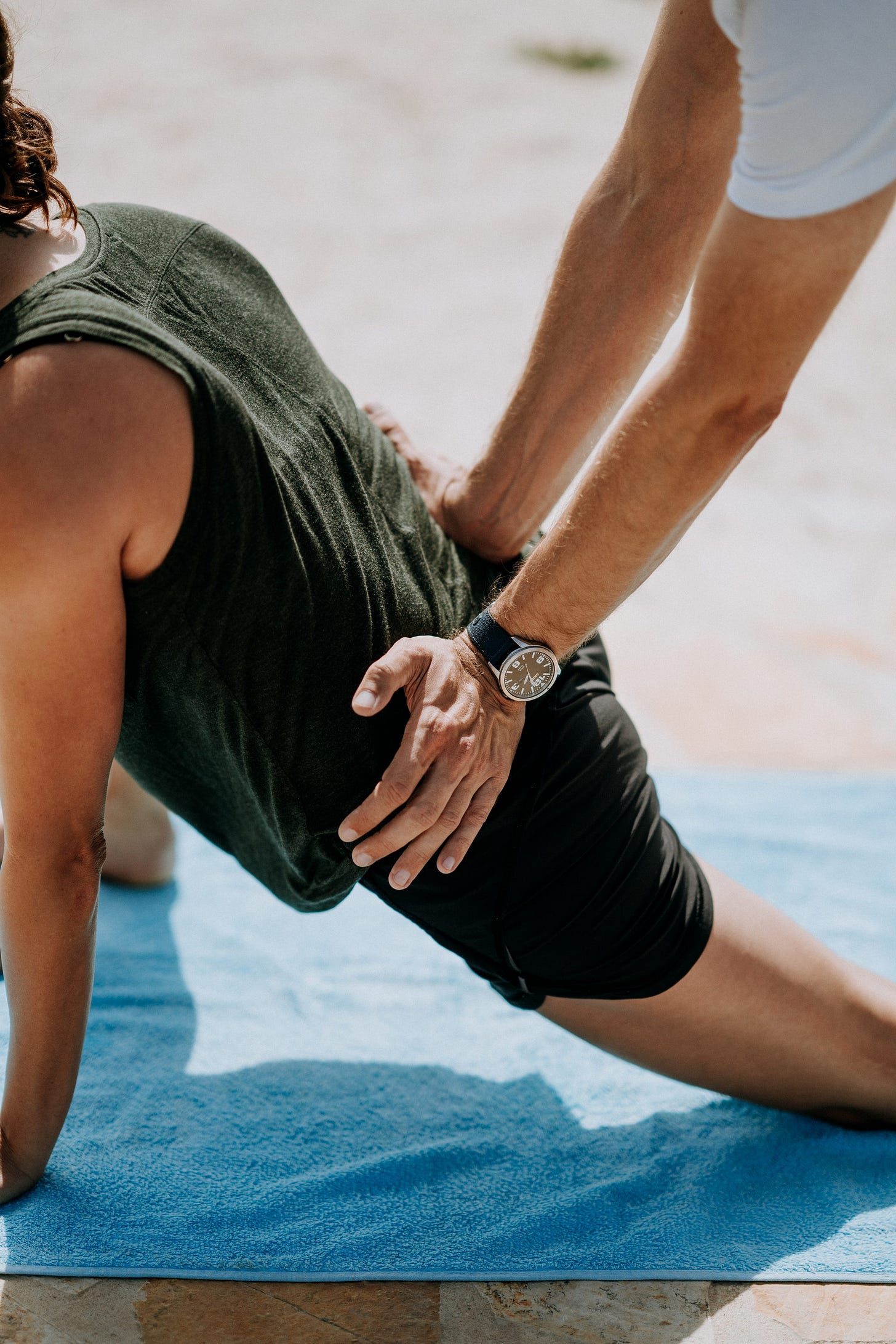Unlocking the Secrets of Lower Back Pain
Cures and alleviations for lower back pain that actually work
Cures and alleviations for lower back pain that actually work

As a retired fitness and health coach and a former national standard squash player, I’ve had my fair share of battles, both on and off the court. While smashing serves and diving for the ball, I often underestimated the potential harm lurking behind the scenes — lower back pain.
How My Squash Career Shaped My Understanding of Lower Back Pain
Squash, a sport that demands agility, speed, and precision, is unforgiving when it comes to lower back health. For years, I pushed my body to its limits, occasionally paying the price in the form of an aching lower back.
It wasn’t until my retirement that I delved into the mysteries of lower back pain, seeking to understand its causes, effects, and, most importantly, effective remedies.
Who’s Most Vulnerable to Lower Back Pain?
Lower back pain doesn’t discriminate based on age or gender, but it does have its favourites. Research suggests that it’s more common in adults aged 30 to 60, although it can affect people of all ages. Interestingly, the prevalence varies by gender. While men often experience lower back pain earlier in life, women tend to be more affected in their later years.
Cures and Alleviations for Lower Back Pain That Actually Work
Addressing lower back pain requires a multifaceted approach. While conventional wisdom often points to rest, heat or ice therapy, and pain medications, there’s more to the story.
Experts recommend a combination of treatments that include physical therapy, strengthening exercises, and maintaining a healthy weight. The key is to improve the core muscles, flexibility, and posture.
What the Pros Say About Lower Back Pain
Medical professionals and orthopaedic experts have a wealth of knowledge to share when it comes to lower back pain. It’s not just about pain relief; it’s about preventing future issues. Experts stress the importance of maintaining a strong core, practising good posture, and avoiding excessive sitting.
They also recommend exploring alternative therapies such as yoga and acupuncture to alleviate chronic pain.
Strategies to Kick Lower Back Pain to the Curb
As someone who’s been in the fitness industry for years, I’ve gathered some unconventional yet effective strategies to combat lower back pain. These are tried and tested, and I’m excited to share them with you:
1. Mindful Movement: Embrace Yoga and Pilates
Yoga and Pilates are much more than just trendy fitness practices; they’re therapeutic approaches to healing lower back pain. These disciplines focus on flexibility, core strength, and posture, all of which play a crucial role in maintaining a healthy lower back.
The controlled, deliberate movements in yoga and Pilates help to improve your body’s alignment and flexibility while strengthening the core muscles that support your spine. By practising these mind-body exercises regularly, you can gradually alleviate lower back pain and prevent future issues.
2. Ergonomic Everything: Optimize Your Workspace
Your work environment can significantly impact your lower back health, especially if you spend long hours at a desk.
Investing in an ergonomic chair and setting up your workspace to promote good posture is essential. Ensure that your computer monitor is at eye level, your chair supports your lumbar spine, and your feet are flat on the ground.
Make adjustments to your desk and chair height to reduce strain on your lower back. This proactive approach will help maintain good spinal alignment during long work hours.
3. Sleep Like a Pro: Prioritize Quality Sleep
Sleep is a critical aspect of overall well-being and can have a substantial impact on your lower back. Experiment with different sleeping positions to find the one that best supports your back.
Some find relief by sleeping with a pillow placed between their knees if they’re side sleepers, while others may prefer sleeping on their back with a pillow under their knees.
Investing in a quality mattress and pillows that provide proper support is equally important. Your goal is to ensure that your spine remains in a neutral position while you sleep, reducing stress on your lower back.
4. Spice it Up: Incorporate Turmeric
Turmeric, a golden-yellow spice commonly used in Asian cuisine, contains a potent anti-inflammatory compound called curcumin. Adding turmeric to your meals or taking it as a supplement can help reduce inflammation in your body, including the inflammation that may be contributing to your lower back pain.
Curcumin is known for its natural pain-relieving properties and can be a valuable addition to your diet. Consider discussing its usage with a healthcare professional, especially if you are taking other medications or have underlying medical conditions.
5. Laughter Therapy: Find Joy in Humour
Laughter is, indeed, the best medicine. It may not be a conventional treatment for lower back pain, but the benefits of humour are well-documented.
Laughter releases endorphins, the body’s natural feel-good chemicals, which can help alleviate pain and reduce stress. Make time for activities that bring joy, whether it’s watching a comedy show, spending time with friends who make you laugh, or engaging in hobbies that bring a smile to your face.
By incorporating humour into your daily routine, you can improve your emotional well-being, which in turn can have a positive impact on your perception of pain.
6. Keep Moving: Exercise Moderation and Variety
While rest is crucial for healing, inactivity can lead to muscle stiffness and increased pain. It’s essential to strike a balance. Engage in regular, moderate physical activity that focuses on strengthening the muscles supporting your lower back.
Activities like swimming, walking, and low-impact aerobics can promote flexibility and muscular balance. However, it’s crucial to avoid high-impact or strenuous exercises that might exacerbate your condition.
Always consult with a healthcare provider or physical therapist to determine the most suitable exercise regimen for your specific situation.
Incorporating these strategies into your daily life can help you effectively manage and alleviate lower back pain. Remember that consistency and patience are key; improvements may not be immediate, but with dedication and a holistic approach, you can regain control over your lower back health and enjoy a pain-free life.
Lower back pain is a formidable opponent, but with the right knowledge and strategies, you can regain control over your life. Whether you’re an athlete or an office worker, the insights I’ve shared here can guide you on the path to pain-free living.
Remember, your journey to a pain-free back begins with understanding its causes and effects, and with the commitment to explore unconventional yet effective remedies.




